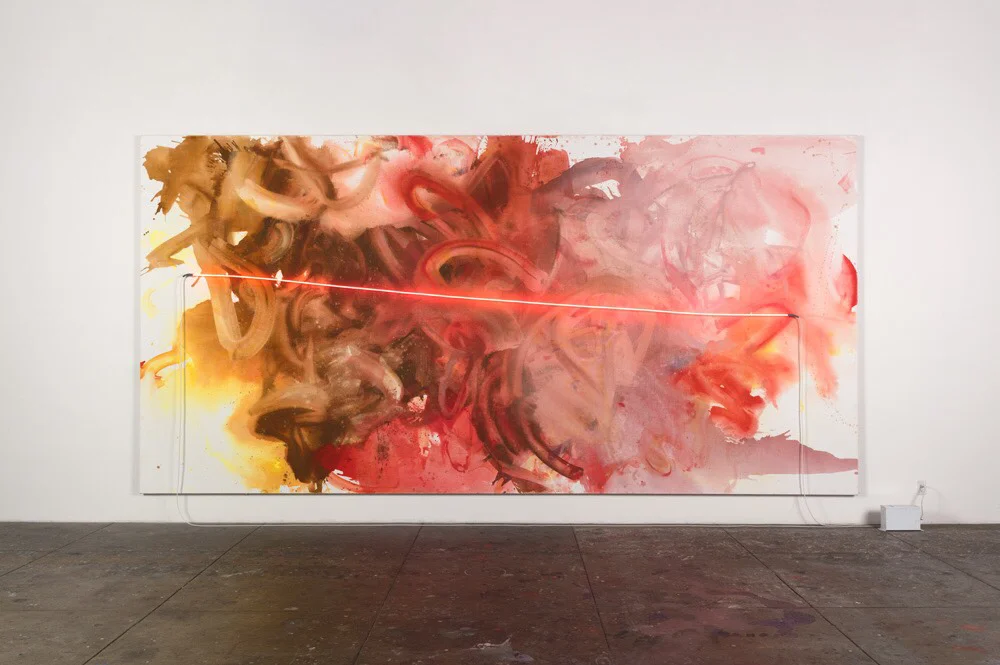I’ve Seen Gray Whales Go By
By Anna Brown
Image via Artiboard
Mary Weatherford’s exhibition I’ve Seen Gray Whales Go By holds the eye and begs to be analyzed, allowing new conclusions to be formed about every color combination. The vast white walls of The Gagosian, a notorious Chelsea gallery, place the viewer’s attention on the works, which dominate the space. The walls on which they are hung are expansive, causing the paintings to seem apocalyptic. Between the architecture of the gallery and Weatherford’s work, a truly captivating experience is established.
I’ve Seen Gray Whales Go By is a thunderous yet playful use of color. Each painting relates to one other, yet they all project independent personalities, harmonizing with harsh brush strokes of color. Subtle splatters of paint are dusted all over the canvas and add dimension to the commotion. GLORIA, one of the exhibition’s most vibrant stories, seems to possess multiple attitudes.
“GLORIA” by Mary Weatherford
The use of golds and mustards to the far left acts as a beam of light lost within the muddy textures. The transition from brown to cherry red seems violent, a quickly changing approach. This blood red continues as the last portion fades into a silvery-matte baby pink. The stark neon tubes that float across the canvas fracture the paintings with their physicality but blend in with their color. The consistency of vast, consuming brush strokes being interrupted by this bright neon beam shows just how quickly our attention can be breached.
A reflection of the tubes glows on the marble floor of the Gagosian, creating a second illusion for the viewer derived from the original image. When one looks at these neon tubes head on, their stark, bright light echoes even after looking away from the painting, like beams from the sun causing the human eye to create multiple movements within a single piece of work.
Artists such as Andy Warhol, Ed Ruscha, and Mary Weatherford are considered revolutionary in the canon of contemporary American art for a reason. Through the power of their art alone, they will the public into taking a break from their scattered lives, if only for a minute. Their use of vivid, electric coloring combined with striking portrayals and phrases suggests a charismatic spirit that resonates with the human eye. Warhol and Ruscha represent a turning point not only in the media and advertising industries, but in the art world as a whole. Weatherford follows suit in placing emphasis on creating images that the public desires to look at — images that are so gripping that people cannot help but stare. These artists have found enticing ways to combine techniques of fine art with pop culture characteristics, pioneering rebellious methods to make their messages unforgettable. I’ve Seen Grey Whales Go By connects to Weatherford’s previous works in that every aspect is ripe for contemplation and analysis. The eye is confronted with a multitude of focal points, creating a neverending opportunity to investigate her creations. Weatherford creates a pattern that is present throughout all of her works, unified through a central theme: “New York has always been about light to me,” she says. The artist successfully shows us how light itself can easily become a director and an influencer even in the darkest, most consuming situations. For Weatherford to hold her first ever exhibition at the Gagosian Gallery in New York is fitting — her work of light is being projected in her city of light, her city of brilliance.


